Life Lessons from the Horselady
Feature article, cover story.
Life Lessons from the Horselady
Story and Photos by Kathryn R. Burke
[Montrose Monitor, 2014] IN EVERY COMMUNITY – especially the smaller ones like we have in western Colorado – there are usually a few individuals who are truly unique. Not peculiar, not eccentric, but extraordinary, an absolute one-of-a-kind. In our community, Alice Billings certainly fits that description.
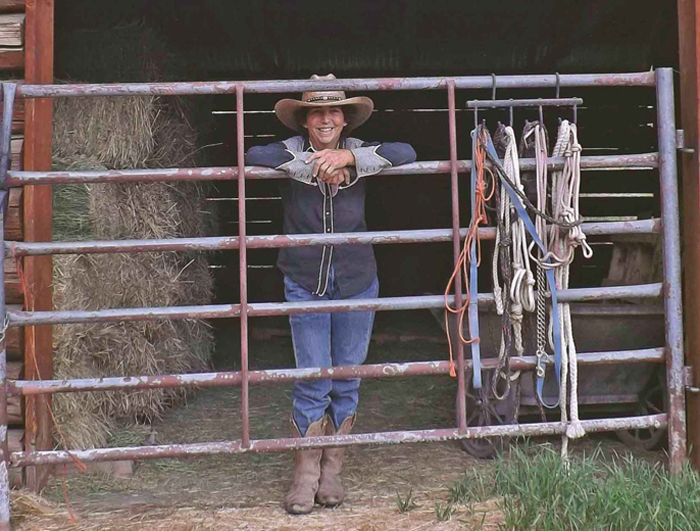
Alice Billings, looking out through the barn gate at Thunder Heart Haven Ranch. Kathryn R. Burke photo.
“Everyone knows where she is and where she’s been,” says a local businessman, whose ice cream shop she frequents. “She leaves a trail wherever she goes!” Alice travels in a cloud of llama hair, bits and pieces of alfalfa, hay, and clumps of what happens after her beloved horses eat both.
When you spot her in the pasture or around town, she’s often dressed in paint-spattered clothing, colorful ‘crocs’ (in summer) or muck boots (in winter), and a beat-up old hat clamped down on her unruly, curly hair. When she’s not working her day job, she’s usually working with horses or painting them. (And occasionally chasing after one of her ‘Houdini’ llamas.)
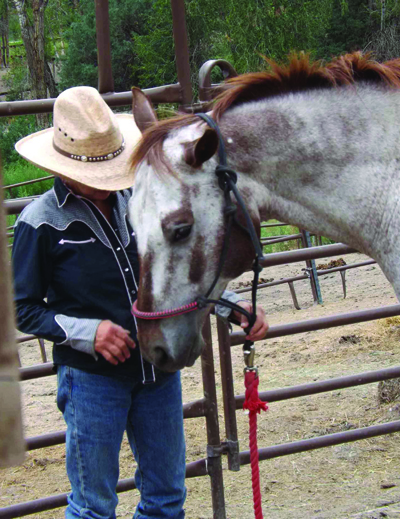
Alice Billings with her Apaloosa, Gus. Kathryn R. Burke photo.
Another thing that earns Alice Billings her billing as “unique” is that she has created herself to be who she was, is now, and wants to be in the future. Alice is the essence of a true renaissance woman: artist, musician, poet, author. Now add educator, equine communicator . . . and self-described ‘horselady.’
Alice’s path to ‘uniquedom’ has not been an easy one; it’s been fraught with curves and switchbacks. She didn’t grow up in a barn, although now she wants to live in one. And although she’s always loved horses and rode as a child, she only recently started riding again (after 35 years). She comes by her art genetically, but her love of horses is learned. Her life journey is a balance of heredity and life experience.
Alice grew up in Queens, the daughter of a Bohemian artist and cartoonist who was also an art teacher. She made her first drawings and paintings working alongside him in his studio. “I was four years old,” she says. “It was from my father that I learned the importance of drawing and of understanding color.” She followed in his footsteps, studying art and music and earning a degree in both.
But the next step in her crooked path took her to Hollywood, then later to Ridgway; she spent 32 years as personal assistant to actor Dennis Weaver in both locations, and worked in Ridgway with a large-animal veterinarian. And she kept on painting. Living in Ridgway, maybe inspired by the Weaver western connection, or influenced by the many ‘horse people’ who live here, Alice began ‘collecting’ real live horses as well as painting them. And all the while her love of horses continued to grow.
She feels there is a special bond between humans and horses. Alice’s ranch, Thunder Heart Haven, is a sanctuary – for her, for ‘senior’ or wild horses that she rescues, for students who want to learn more about the human/equine connection. To foster that relationship, she offers workshops and classes at the ranch. She has also moved her easel to the barn. “The horses are where my heart is,” she explains. “I like to draw and paint them here, to be with them. I plan to build living quarters over the barn, so I can live with them, too.”
Asked where she sees herself in the future, Alice replies: “Where I’d like to be . . . well, I’d like to turn this property into a true sanctuary, a place where I can combine horse consciousness with human consciousness. Horses are very intuitive, and women especially, maybe because they are innate nurturers, relate to them.” Men relate too, but Alice feels the “macho man” mentality often gets in the way. So, she envisions her property evolving into a sort of female human/horse/educational center or retreat. Maybe with three women living on the ranch (house, cabin, her in apartment over the barn), all three involved with the horses in some way.”
As Alice’s philosophical future evolves, so does her art. She is a complex woman. A younger Alice painted with strong line and colorful abandon, mainly with acrylics, and her vibrant equine art is well known in the region. Always strong in drawing, she is experimenting now by combining drawing with water color. “‘Color gets all the credit,’ someone once told me,” she explains, “’but value does all the work.’“
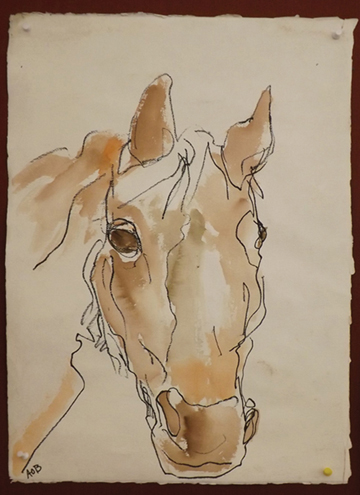
‘Thunder.’ Watercolor by Alice Billings.
Her new work is all about nuances and is reflective of where she’s been and where she’s going next. Like her new, gentler view of her life and her future, watercolor is a subtle, softer medium. It’s refining line, defining shape with shade and shadow. But watercolor is not a splash and dash technique. “My dad, who excelled in watercolor, said it was the most difficult medium to control,” Alice notes. “It dries quickly – in most weather – and once you’ve covered up ‘white space’ with paint, you can’t get it back again. So you work quickly, in layers, building up.”
Kind of like what Alice is doing now as she builds her future. One layer at a time. “Life changes,” she says. “You need to embrace where you are and have trust that you are headed in the right direction. The horses help me do that. They help me understand who and where I need to be.”
Alice’s work my be seen at Art by the Park Gallery, 360 Sherman Street, on the boardwalk across from the Ridgway Town Park. Join Alice and her friends for a special show at the gallery, with a reception hosted by the gallery and Café Ridgway, Saturday, Oct. 11, 2014. 5-8 p.m. Libations, food, music, painting demonstrations. See more of her work at Alice Billing’s website, Horselady.us.
Update. This article was the cover story in the Montrose Monitor, fall issue, 2014. The Monitor is now part of the San Juan Silver Stage. Alice’s work is still available at numerous local galleries including Art by the Park in Ridgway, Colo. She also sells her work and teaches workshops. Learn more at Thunder Heart Haven, Alice’s ranch and Equine Learning Center. which offers Educational Equine Experiences.

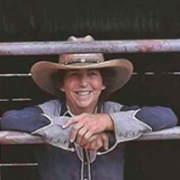

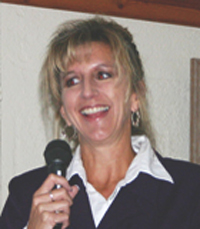 [Nucla, Colo. October 16, 2012] Tracy Hill made Colorado basketball history while playing for Ridgway High School (where her father still coaches today) She was top scorer between 1980 and 1983, setting the record for career points scored She set 21 state marks; 17 still stand. Hill went on to play at university, then played professionally in Australia where she was named Tasmania Player of the Year. She returned to Nucla to coach, guiding her team to the 1998 team title. She lives in Nucla today with her husband, the school’s athletic director, and her seven-year old son. Hill is working on her PhD in Education.
[Nucla, Colo. October 16, 2012] Tracy Hill made Colorado basketball history while playing for Ridgway High School (where her father still coaches today) She was top scorer between 1980 and 1983, setting the record for career points scored She set 21 state marks; 17 still stand. Hill went on to play at university, then played professionally in Australia where she was named Tasmania Player of the Year. She returned to Nucla to coach, guiding her team to the 1998 team title. She lives in Nucla today with her husband, the school’s athletic director, and her seven-year old son. Hill is working on her PhD in Education.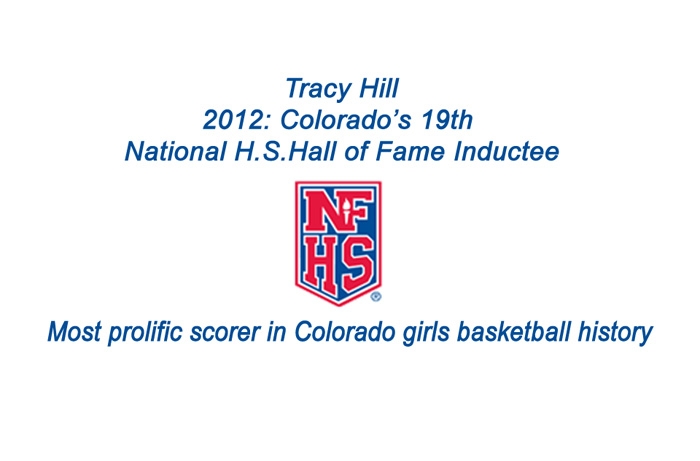
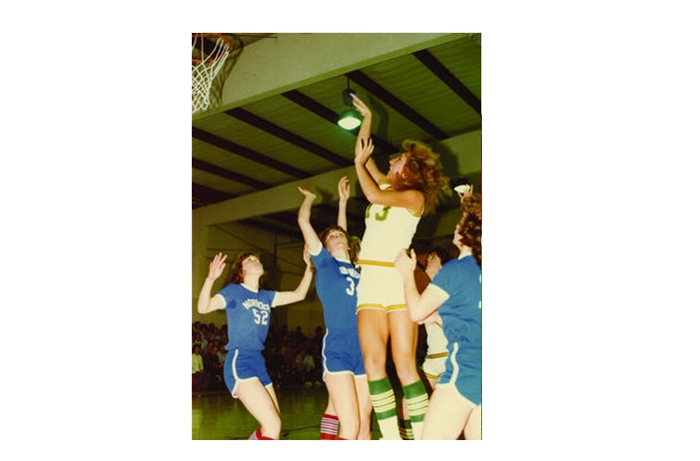
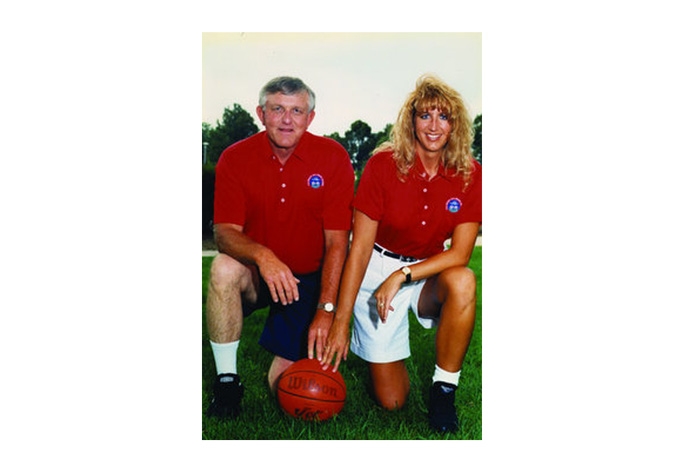


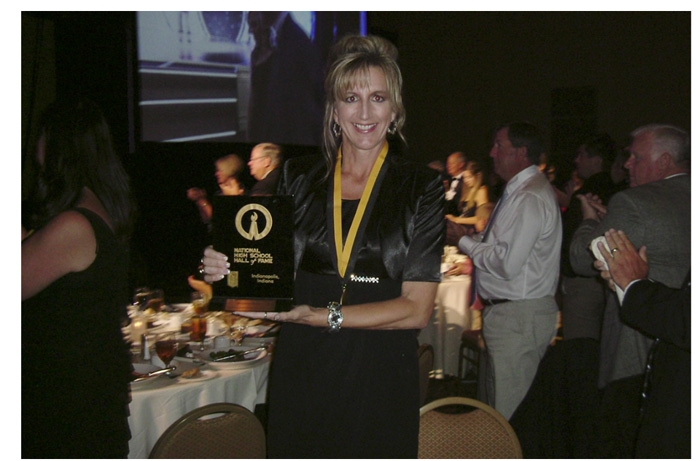
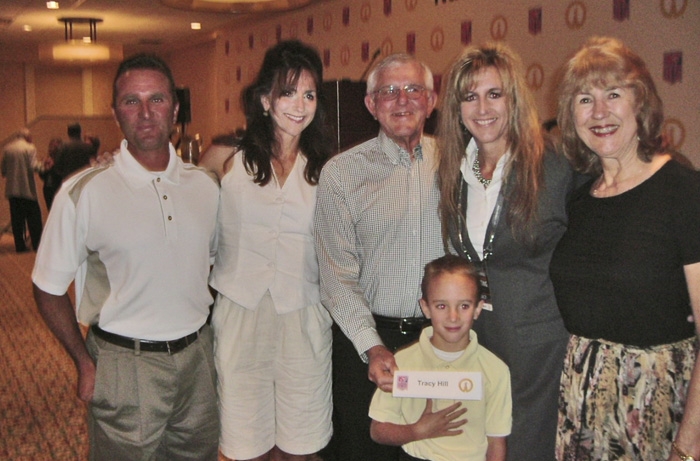
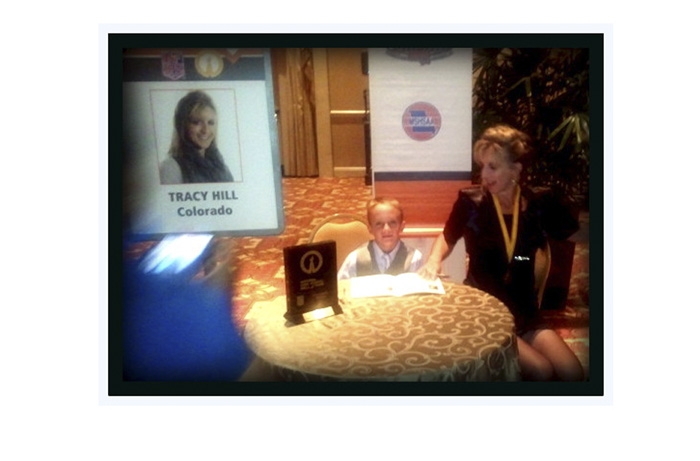
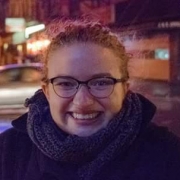
 [Ouray Colo., January 17, 2017] Julia Vann graduated from Ouray High School in 2015 and got a full ride to Amherst College in Massachusetts, where she is a math major.
[Ouray Colo., January 17, 2017] Julia Vann graduated from Ouray High School in 2015 and got a full ride to Amherst College in Massachusetts, where she is a math major.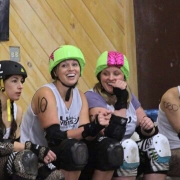
 [Montrose, Colo. February 17, 2015] Roller Derby is making a comeback in Colorado. Google the sport and you will find a number of Colorado teams, the most ‘notable’ probably being Denver Roller Dolls or Rocky Mountain Roller Girls, both based in Denver.
[Montrose, Colo. February 17, 2015] Roller Derby is making a comeback in Colorado. Google the sport and you will find a number of Colorado teams, the most ‘notable’ probably being Denver Roller Dolls or Rocky Mountain Roller Girls, both based in Denver. As interest grows, more and more derby events are being scheduled. Locally, the UVV plan to participate in Rollin on the River, Montrose, this summer. Still in the planning stages, the event will feature a mix-up roster of skaters from different leagues. “It’s just a bunch of girls having fun,” Crystal declared. “And we hope to add a kind of a brewfest, except we will have more distillers than brewers, maybe call it Whiskey and Wings.”
As interest grows, more and more derby events are being scheduled. Locally, the UVV plan to participate in Rollin on the River, Montrose, this summer. Still in the planning stages, the event will feature a mix-up roster of skaters from different leagues. “It’s just a bunch of girls having fun,” Crystal declared. “And we hope to add a kind of a brewfest, except we will have more distillers than brewers, maybe call it Whiskey and Wings.”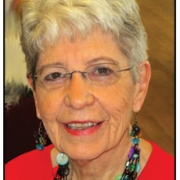
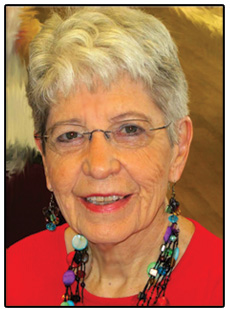
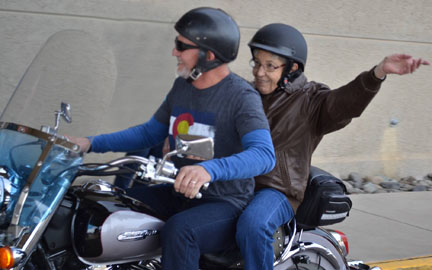
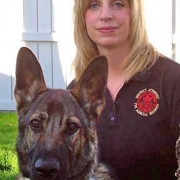

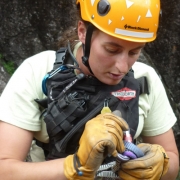
 [Ouray, Colo. October 21, 2014] Ruth Stewart is a Paramedic with OCEMS and a member of OMRT. To those of us who would ever need her services, in layman’s terms Ruth Stewart is a Paramedic with Ouray County Emergency Medical Services and member of the Ouray Mountain Rescue Team. Whatever you call her, whenever you call her, Ruth Stewart is definitely the woman you want when you have an emergency.
[Ouray, Colo. October 21, 2014] Ruth Stewart is a Paramedic with OCEMS and a member of OMRT. To those of us who would ever need her services, in layman’s terms Ruth Stewart is a Paramedic with Ouray County Emergency Medical Services and member of the Ouray Mountain Rescue Team. Whatever you call her, whenever you call her, Ruth Stewart is definitely the woman you want when you have an emergency.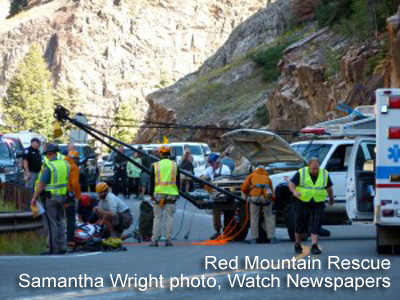 The biggest calls are major trauma calls, such as a motorcycle accident, where every thing happens at once. Most calls, however, are related to minor injury or illness, perceived or real. The single biggest category of EMS calls, Stewart says, is “altitude stuff, tourists or older folks experiencing breathing and heart issues due to altitude.” EMTs can usually handle most minor incidents on the spot. Others must be transported to the hospital (Montrose) or, if very serious, to a medi-flight helicopter at a local landing zone such as Ouray Town Park, Ridgway Fairgrounds, Dallas Divide, or Yankee Boy Basin.”(There are 35-preplanned landing zones in our area.) From there, they can be flown to St. Mary’s in Grand Junction.
The biggest calls are major trauma calls, such as a motorcycle accident, where every thing happens at once. Most calls, however, are related to minor injury or illness, perceived or real. The single biggest category of EMS calls, Stewart says, is “altitude stuff, tourists or older folks experiencing breathing and heart issues due to altitude.” EMTs can usually handle most minor incidents on the spot. Others must be transported to the hospital (Montrose) or, if very serious, to a medi-flight helicopter at a local landing zone such as Ouray Town Park, Ridgway Fairgrounds, Dallas Divide, or Yankee Boy Basin.”(There are 35-preplanned landing zones in our area.) From there, they can be flown to St. Mary’s in Grand Junction.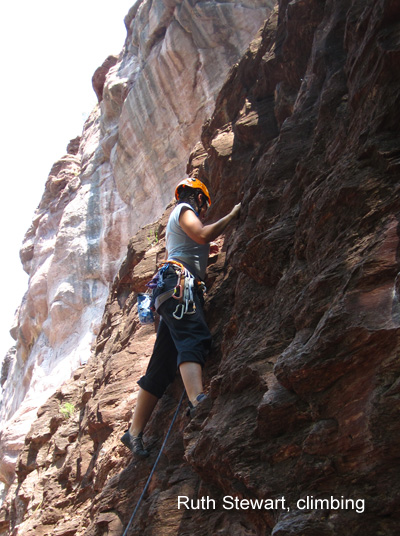 Search and Rescue is a whole different situation. OMRT has its own vehicles: a large heavy-duty pickup with a shell and winch and a land cruiser for back country. There are several women, and six S&R members are ‘crossover’ serving as both EMTs and S&R crew. S&R isn’t a scheduled shift, like EMT, Ruth explains. “When your pager goes off, if you can go, you go!” They get called out about 20 or so times a year on average, mostly in the summer. “This summer has been a year of ‘Just stay on the hiking trail’ with multiple calls for lost hikers; we usually just guide them back to the trail.” Winter calls are frequently ice-park related.
Search and Rescue is a whole different situation. OMRT has its own vehicles: a large heavy-duty pickup with a shell and winch and a land cruiser for back country. There are several women, and six S&R members are ‘crossover’ serving as both EMTs and S&R crew. S&R isn’t a scheduled shift, like EMT, Ruth explains. “When your pager goes off, if you can go, you go!” They get called out about 20 or so times a year on average, mostly in the summer. “This summer has been a year of ‘Just stay on the hiking trail’ with multiple calls for lost hikers; we usually just guide them back to the trail.” Winter calls are frequently ice-park related.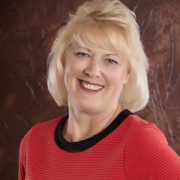
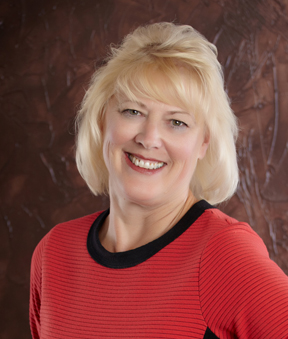 [Ouray, Colo. March 20, 2018] Katie Sickles is a small town girl—from Cedaredge; Ouray’s a small town—just the right size. She’s an outdoor girl—bikes, hikes, swims and crossfits; Ouray has a hot pool, fitness center and tons of biking and hiking trails. She has experience in locating resources and implementing infrastructure action plans. Katie worked on more than one task force in Delta County, where she was town administrator for over 10 years. Ouray has some infrastructure issues—helping to resolve them is at the top of her own action plan. Ouray was always a favorite family vacation spot while she was growing up; now she lives here. Katie and Ouray—a perfect fit.
[Ouray, Colo. March 20, 2018] Katie Sickles is a small town girl—from Cedaredge; Ouray’s a small town—just the right size. She’s an outdoor girl—bikes, hikes, swims and crossfits; Ouray has a hot pool, fitness center and tons of biking and hiking trails. She has experience in locating resources and implementing infrastructure action plans. Katie worked on more than one task force in Delta County, where she was town administrator for over 10 years. Ouray has some infrastructure issues—helping to resolve them is at the top of her own action plan. Ouray was always a favorite family vacation spot while she was growing up; now she lives here. Katie and Ouray—a perfect fit.
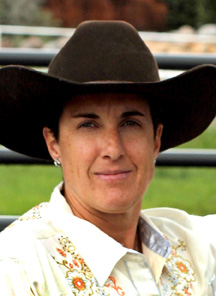 [Ridgway, Colo. March 21. 2017] Erin Stadelman went from a California beach kid to living in the mountains and married to a cowboy. “Sometimes you have to be careful what you wish for.”
[Ridgway, Colo. March 21. 2017] Erin Stadelman went from a California beach kid to living in the mountains and married to a cowboy. “Sometimes you have to be careful what you wish for.” And that’s exactly what she did. Here she is; 34 years, four children, six grandchildren (“We’re a blended family, and a prolific group!” she laughs), and a whole lot of horses later, living on the Ralph Lauren Ranch with her husband, Steve, who cowboys for the RRL. While Steve cowboys, Erin is involved in 4H, the Cattleman’s Association (she was president for eight years), rodeo association (still president of that), and the Ouray County Fairgrounds, where she has been the Assistant Fairgrounds Manager since 2015. “Susan [Long, the Fairgrounds Manager] decided that she needed help running the fairgrounds and event center, right after we finished [replacing] the grandstands and new arena. They needed help with marketing, so she and [Ouray County] BOCC solicited me for the job.”
And that’s exactly what she did. Here she is; 34 years, four children, six grandchildren (“We’re a blended family, and a prolific group!” she laughs), and a whole lot of horses later, living on the Ralph Lauren Ranch with her husband, Steve, who cowboys for the RRL. While Steve cowboys, Erin is involved in 4H, the Cattleman’s Association (she was president for eight years), rodeo association (still president of that), and the Ouray County Fairgrounds, where she has been the Assistant Fairgrounds Manager since 2015. “Susan [Long, the Fairgrounds Manager] decided that she needed help running the fairgrounds and event center, right after we finished [replacing] the grandstands and new arena. They needed help with marketing, so she and [Ouray County] BOCC solicited me for the job.”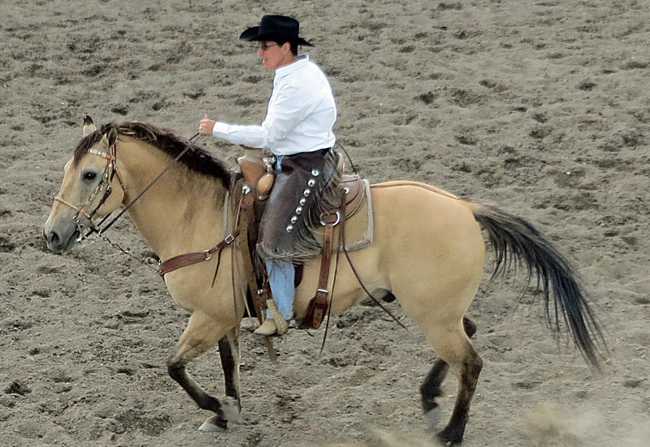
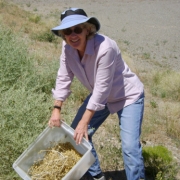
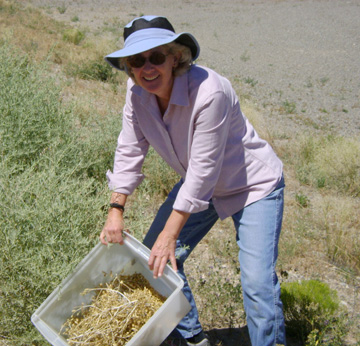 [Montrose, Colo. April 17, 2018] She has a fascinating job, and one that she basically created for herself. Kathy See works as a liaison with land management agencies and other organizations involved in land rehabilitation and restoration. She is the Native Plant Coordinator for the Uncompahgre Partnership. Kathy finds and collects wild seeds for genetic preservation.
[Montrose, Colo. April 17, 2018] She has a fascinating job, and one that she basically created for herself. Kathy See works as a liaison with land management agencies and other organizations involved in land rehabilitation and restoration. She is the Native Plant Coordinator for the Uncompahgre Partnership. Kathy finds and collects wild seeds for genetic preservation.